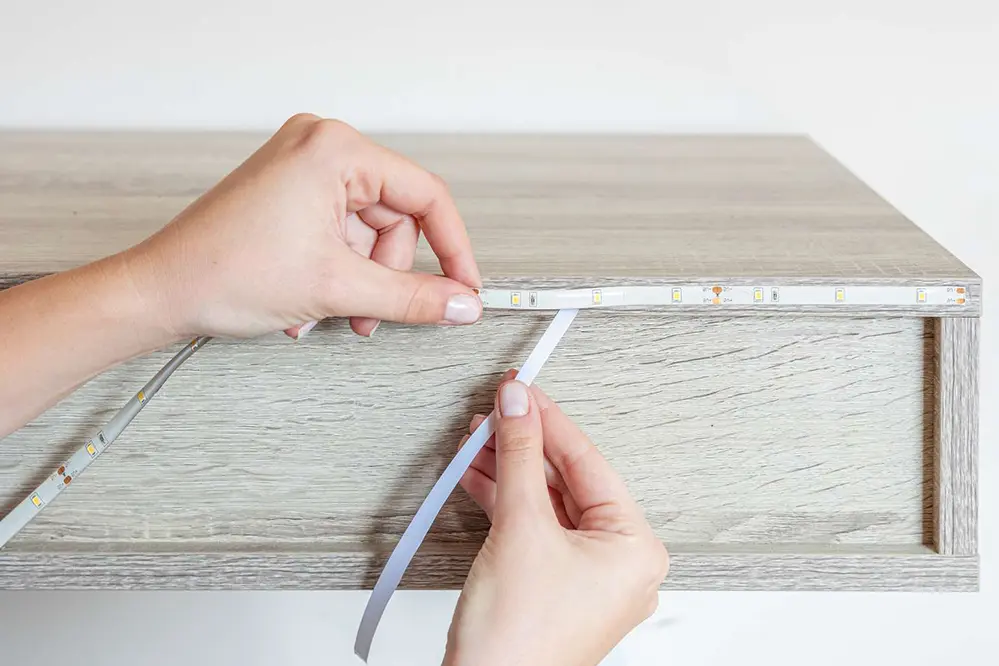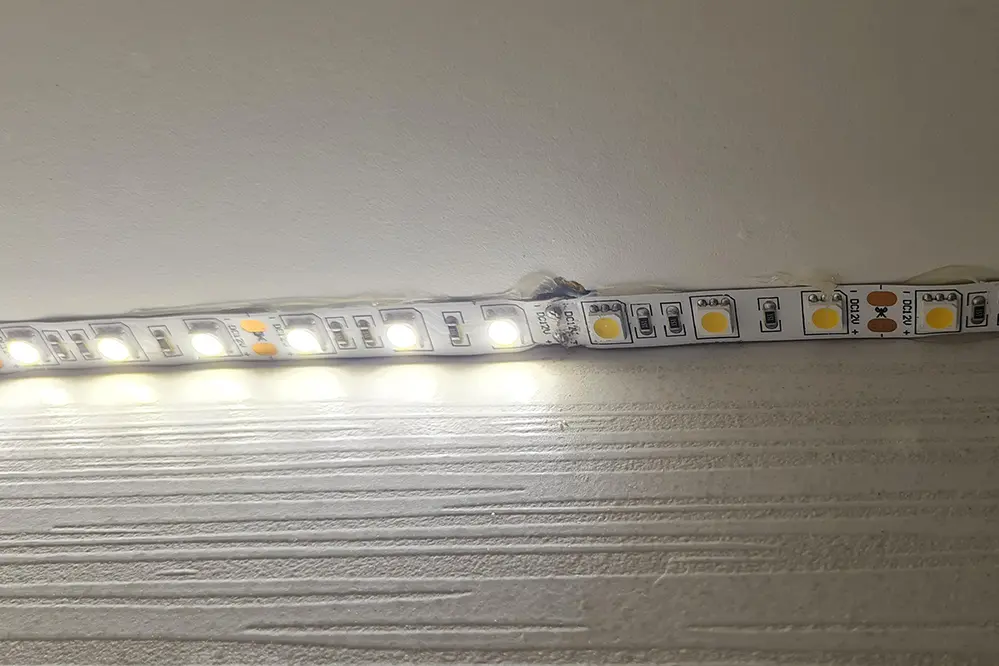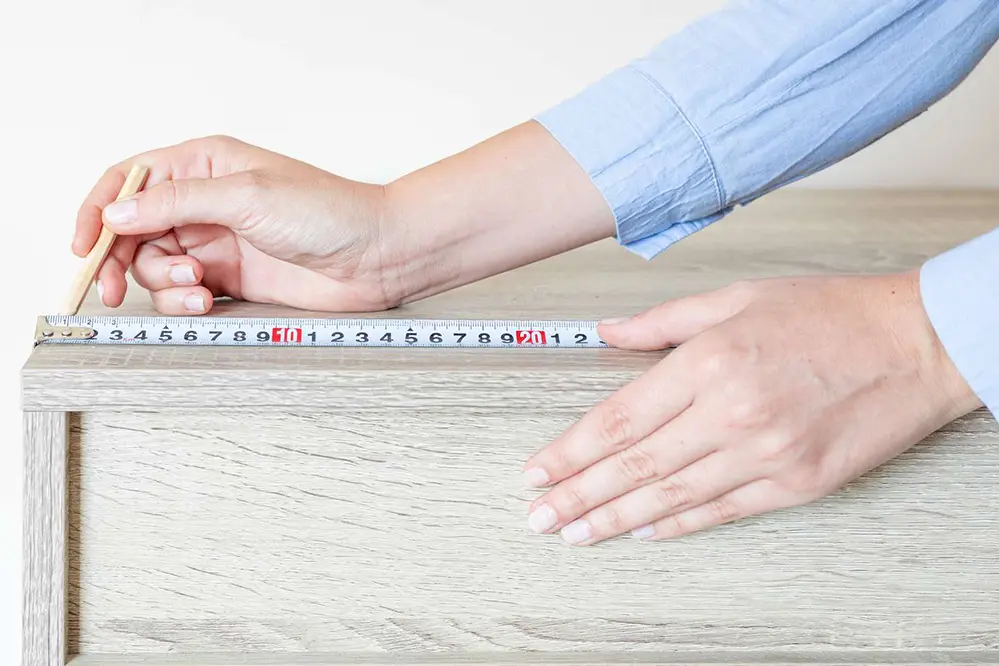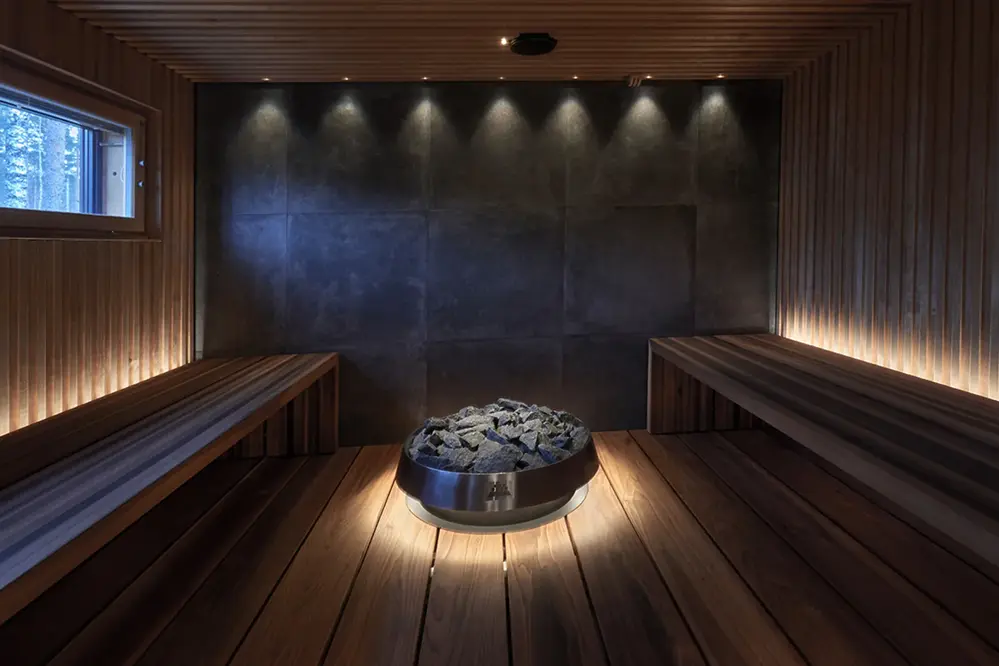Discover the ease of installing LED strip lights with our comprehensive guide. We have the solution to your question: Are LED strip lights easy to install?
LED strip lights are incredibly easy to install, making them a popular choice for both lighting enthusiasts and professionals. With their flexible design and adhesive backing, you can easily customize and install LED strip lights in various locations.
Continue reading to learn more about the installation process, tips, and tricks for a successful installation, and how LED strip lights can transform your space.
Understanding LED Strip Lights
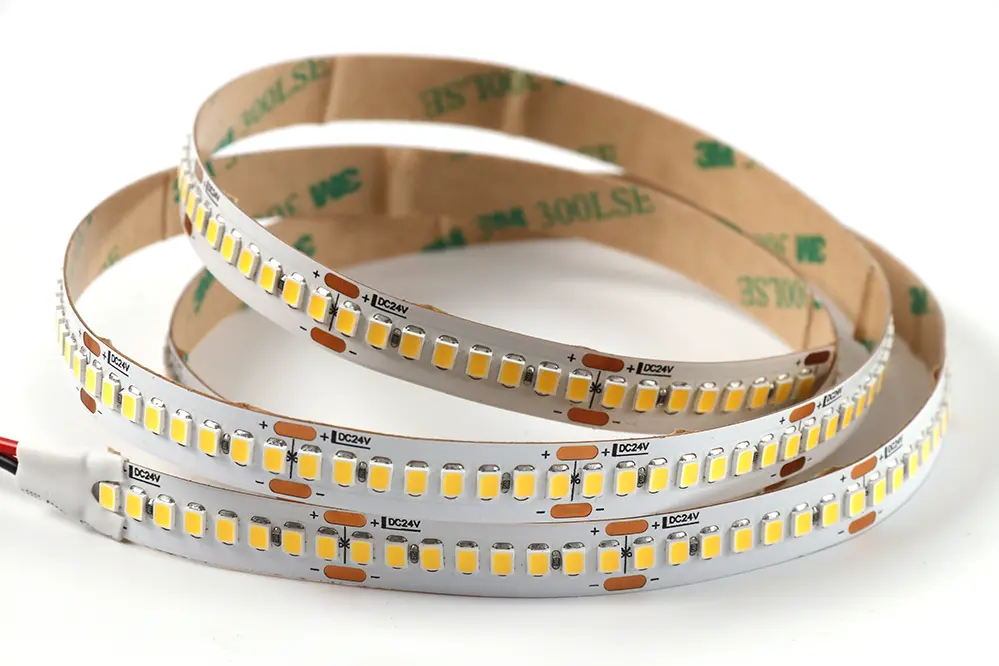
LED strip lights are flexible lighting solutions that consist of a circuit board with small LED chips. These lights come in various lengths, colors, and brightness levels, allowing you to create stunning lighting effects in any space. Whether you want to add ambient lighting to your living room or highlight architectural features in your office, LED strip lights offer endless possibilities.
To install LED strip lights, begin by measuring the area where you want to install them. Cut the strip to the desired length using scissors or a designated cutting point. Ensure that you cut the strip accurately to achieve clean and precise cuts. This step is crucial as it determines the overall appearance and functionality of the lights. Take your time and use sharp scissors or a cutting tool specifically designed for LED strips.
Next, remove the adhesive backing from the strip. It’s important to work on a clean and dry surface to ensure proper adhesion. Before applying the strip, thoroughly clean the surface to remove any dust, grease, or residue that may hinder adhesion. A clean surface will ensure a strong bond between the strip and the surface. Once the surface is clean, firmly press the strip onto the surface, taking care to align it properly. Avoid excessive bending or twisting of the strip, as this can damage the circuit and affect its performance.
Powering LED Strip Lights
Powering LED strip lights is a straightforward process. Most strips come with a power adapter that plugs into a standard electrical outlet. Connect the adapter to the strip’s input end, and you’re ready to go. Some LED strip lights even offer additional features like dimming options or remote control functionality, enhancing the overall user experience. These features allow you to customize the lighting according to your preferences and create different moods in your space.
Common Installation Challenges
While LED strip lights are generally easy to install, there are a few common challenges that you may encounter. One such challenge is ensuring proper adhesion to different surfaces. Before applying the adhesive backing, make sure that the surface is clean, dry, and free from dust or debris. If the strip doesn’t stick well, consider using additional adhesive or mounting clips for extra support. This will ensure that the strip stays in place and doesn’t come off over time.
Another challenge is cutting the strip accurately. Take your time and use sharp scissors or a designated cutting point to achieve clean and precise cuts. If you’re unsure about cutting, consult the manufacturer’s instructions or seek professional assistance to ensure that you get the desired results. Cutting the strip accurately is essential for achieving the desired lighting effect and ensuring that the strip fits perfectly in your space.
Additionally, it is crucial to understand the electrical requirements of LED strip lights. Ensure that the power adapter matches the voltage and wattage requirements of the lights. Using an incompatible adapter can lead to performance issues or even damage the lights. Always refer to the manufacturer’s specifications to ensure a safe and efficient installation. If you have any doubts or concerns about the electrical requirements, it’s best to consult a professional electrician.
Tips for a Successful Installation
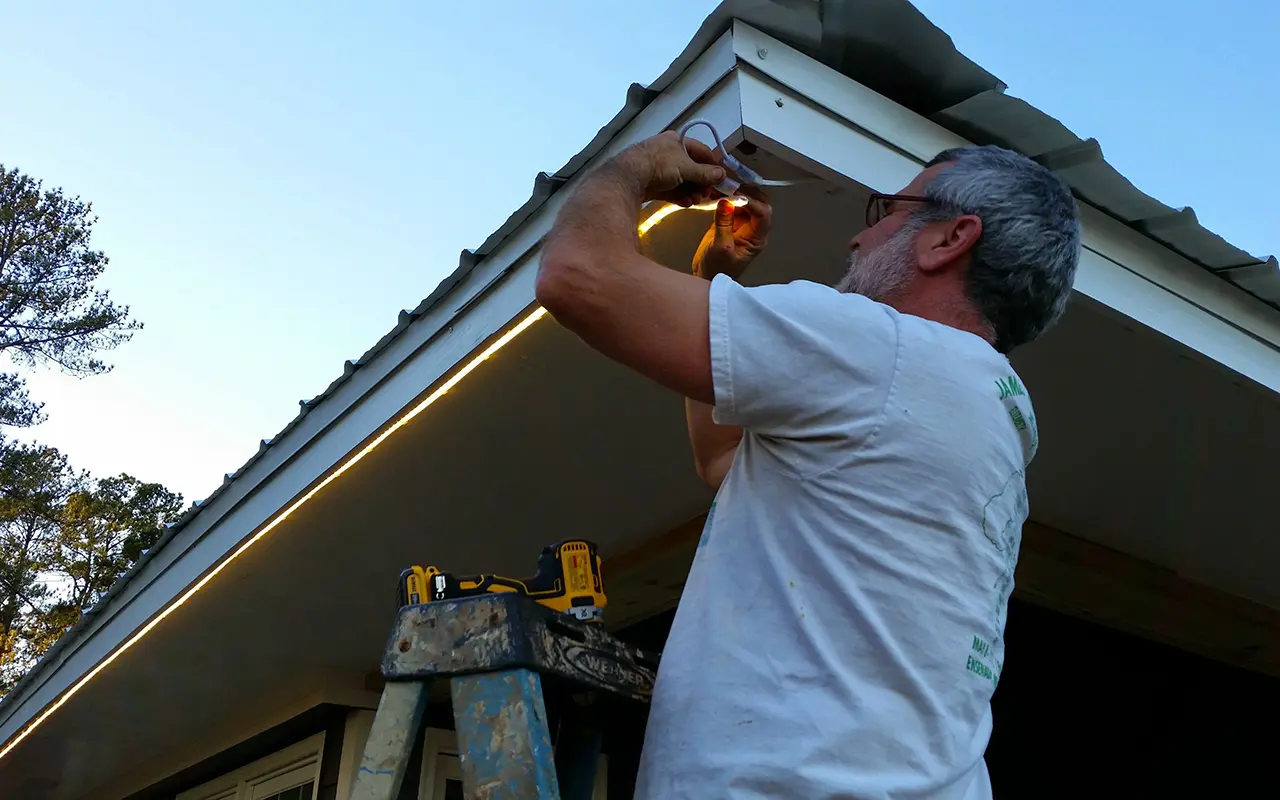
To ensure a successful installation of LED strip lights, consider the following tips:
- Plan your layout: Before installing the lights, carefully plan the layout and placement to achieve the desired lighting effect. Take into account factors such as power outlet accessibility and the length of the strip. This will help you determine the number of strips you need and the best positioning for optimal lighting.
- Clean the surface: Thoroughly clean the surface where you’ll be installing the strip lights. Remove any dust, grease, or residue that may hinder adhesion. A clean surface will ensure a strong bond between the strip and the surface, preventing any issues with the adhesion.
- Test before final installation: Before permanently attaching the strip, test it to ensure that it functions properly. This allows you to make any necessary adjustments or troubleshoot any issues before completing the installation. Connect the strip to the power adapter and turn it on to check if all the LEDs are working correctly.
- Use connectors for corners: If you need to navigate corners or create complex shapes with the strip lights, use connectors specifically designed for LED strips. These connectors provide seamless transitions and maintain the integrity of the circuit. They allow you to create smooth bends and angles without damaging the strip or affecting its performance.
- Consider waterproof options: If you plan to install LED strip lights in areas prone to moisture or splashes, opt for waterproof or water-resistant strips. These will ensure longevity and prevent damage caused by exposure to water. Waterproof strips are ideal for outdoor installations or areas such as bathrooms or kitchens where moisture is present.
By following these tips, you can ensure a successful installation of LED strip lights and create the desired lighting effect in your space.
FAQs
Can LED strips be installed quickly?
LED strips can generally be installed quickly and easily. They are designed to be lightweight and flexible, making them simple to handle and maneuver into place. With their adhesive backing, you can easily stick them to a variety of surfaces, such as walls, ceilings, or furniture.
Additionally, LED strips often come in pre-cut lengths or can be custom cut to fit your specific needs. This allows for faster installation as you don’t have to spend time measuring and cutting the strips yourself. Simply choose the desired length or make the necessary cuts and you’re ready to go.
Furthermore, modern LED strip technology often includes plug-and-play connectors, making the installation process even more convenient. These connectors allow you to easily link multiple strips together without the need for complex wiring or soldering. It’s a simple matter of connecting the strips and ensuring a secure connection.
In summary, LED strips can be installed quickly due to their lightweight design, adhesive backing, pre-cut options, and plug-and-play connectors. Whether you’re decorating a room, creating accent lighting, or adding functionality to a space, LED strips provide a fast and efficient solution.
How hard is it to install LED lights?
Installing LED lights is a relatively easy process that can be done by most individuals. With the right tools and a basic understanding of electrical work, you can confidently install LED lights in your home or commercial space.
To begin, it’s important to identify the location where you want to install the LED lights. Whether it’s for accent lighting or general illumination, ensure that the area is suitable and that you have access to a power source.
Next, gather the necessary tools, such as a screwdriver, wire strippers, and electrical tape. It’s also important to have the appropriate LED light fixtures and the correct type of LED bulbs for your specific needs.
Before starting the installation, make sure to turn off the power supply to the designated area by flipping the corresponding breaker switch in your electrical panel. This step ensures your safety while working with electrical components.
Once the power is turned off, you can proceed with removing any existing light fixtures or components in the area. Follow the manufacturer’s instructions on how to properly connect and mount the LED lights. This usually involves connecting the wiring, securing the fixture in place, and restoring power to the area.
Lastly, it’s crucial to test the newly installed LED lights to ensure they are working properly. If any issues arise, double-check the wiring connections and troubleshoot accordingly.
Overall, with proper preparation, the installation of LED lights can be a straightforward and rewarding DIY project. However, if you’re uncertain or uncomfortable with electrical work, it’s recommended to seek assistance from a qualified electrician to ensure the installation is done safely and correctly.
Are LED strips DIY-friendly?
LED strips are incredibly DIY-friendly, making them a popular option for lighting enthusiasts and professionals alike. With their flexible design and adhesive backing, LED strips can be easily installed in a variety of applications, from under-cabinet lighting to accentuating architectural features.
The versatility of LED strips allows for creative customization, enabling users to cut and connect strips to fit specific lengths or shape them around corners and curves. This makes it simple to achieve the desired lighting effect, whether it be creating a warm and cozy ambiance or adding a vibrant pop of color to a space.
Additionally, LED strips are energy-efficient, cost-effective, and durable. They consume significantly less energy than traditional lighting options, reducing electricity bills and environmental impact. Furthermore, their long lifespan means that they require minimal maintenance and replacement, saving both time and money in the long run.
However, it’s important to note that while LED strips are DIY-friendly, it is still recommended to have a basic understanding of electrical wiring and safety precautions. It is essential to follow the manufacturer’s instructions and consult with a professional if needed, especially when dealing with complex installations or integrating LED strips into existing electrical systems.
In conclusion, LED strips are a DIY-friendly lighting solution that offers flexibility, energy efficiency, and longevity. When properly installed and used with caution, LED strips can enhance any space with their versatile and customizable illumination. So go ahead, unleash your creativity and enjoy the benefits of LED strip lighting in your DIY projects!
Will LED strips need tools?
LED strips do not require tools for installation. They come with adhesive backing, making it easy to attach them to various surfaces. This eliminates the need for additional tools such as nails, screws, or brackets.
The installation process is straightforward. Simply peel off the adhesive backing and stick the LED strip onto the desired surface, whether it’s a wall, cabinet, or ceiling. The adhesive is strong enough to hold the strip in place securely.
For some projects, you may need tools to cut the LED strip to the desired length. LED strips usually have designated cut points, and you can use a sharp pair of scissors or a utility knife to trim them accordingly. It’s important to cut along the specified points to ensure proper functionality.
In certain cases, you might require additional components like connectors or power supplies to connect and power the LED strip. However, these components can typically be installed without the need for specialized tools.
Overall, the installation of LED strips is typically tool-free, making it a convenient and user-friendly lighting option for various applications.
Do I need an electrician to install LED strip lights?
Do I need an electrician to install LED strip lights? In most cases, the answer is no. LED strip lights are relatively simple to install and can be done as a DIY project. However, it is important to have a basic understanding of electrical work and safety precautions. If you are comfortable working with electrical wiring and have experience installing light fixtures, you should be able to install LED strip lights without the help of an electrician.
Before starting the installation process, it is important to plan and measure the area where you want to install the LED strip lights. This will ensure that you have the correct length of strips and the necessary accessories such as connectors and power supplies. Additionally, it is important to choose the right type of strip lights for your specific needs, as there are different options available such as waterproof or color-changing strips.
When it comes to the actual installation, the first step is to clean the surface where you will be mounting the strip lights. This will ensure good adhesion. Then, you can use adhesive backing or mounting clips to secure the strips in place. Next, you will need to connect the strips using connectors and make sure the polarity is correct. Finally, you will need to connect the power supply to the strips and test the lights to ensure they are working properly.
While installing LED strip lights can be a DIY project, it is important to remember that working with electricity can be dangerous if not done correctly. If you have any doubts or concerns about your electrical skills, it is always best to consult with a licensed electrician. They can provide guidance, ensure everything is done safely, and help with any additional electrical work that may be required.
In conclusion, while an electrician is not always necessary for installing LED strip lights, it is important to have a basic understanding of electrical work and safety precautions. If you are confident in your abilities, you can proceed with the installation as a DIY project. However, if you are unsure or uncomfortable with electrical work, it is recommended to consult with a professional electrician to ensure the job is done correctly and safely.
Conclusion
LED strip lights are an excellent choice for anyone looking to add versatile and customizable lighting to their space. With their ease of installation and wide range of options, they have become a favorite among lighting enthusiasts and professionals alike. By understanding the basics of installation, addressing common challenges, and implementing the provided tips, you can confidently install LED strip lights and transform your space.
If you’re in search of high-quality LED strip lights and LED neon strips, consider reaching out to Unitop, a professional Chinese manufacturer. With their expertise and commitment to delivering top-notch products, Unitop offers a wide range of LED strip lights that are designed to meet various lighting needs. Whether you’re looking for residential or commercial lighting solutions, Unitop can provide you with reliable and efficient LED strip lights that will enhance the ambiance of your space. Contact Unitop today to explore their extensive range of LED strip lights and take your lighting design to the next level.
